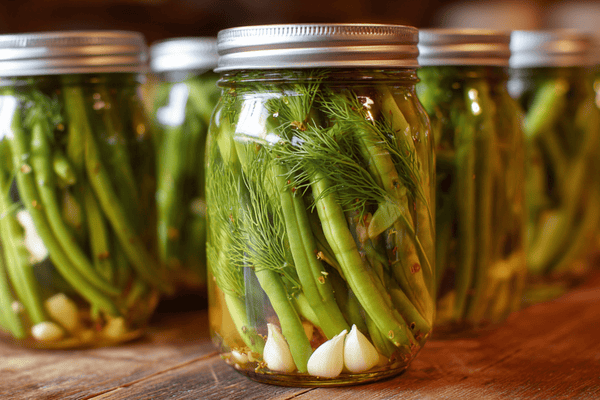
Mangoes are luscious tropical fruits known for their sweet and tangy flavor. Their vibrant colors and rich taste make them popular for refreshing snacks, desserts, and even savory dishes. However, if you've never peeled a mango, it can be tricky to know where to begin. Fear not! This article will walk you through peeling a mango, from selecting the perfect fruit to savoring its succulent flesh. So, let's dive in and master the art of mango peeling!
>Why Peel a Mango Properly?Before we delve into the steps of peeling a mango, let's briefly discuss why it's essential to peel it properly. By peeling a mango correctly, you maximize the delicious fruit you enjoy while minimizing waste. A well-peeled mango allows you to savor every juicy bite without any bitter or fibrous parts that might be present in the skin. Additionally, peeling a mango correctly allows for easy slicing, dicing, or pureeing, depending on how you plan to use it in your recipes. Now, let's move on to the step-by-step guide.
Step 1: Gather the Necessary Tools
To start peeling a mango, you'll need a few basic tools:
- Ripe Mango: Choose a mango that is slightly soft when gently squeezed. Look for fruit with vibrant colors and a fragrant aroma.
- Cutting Board: A sturdy cutting board provides a stable surface for peeling and cutting the mango.
- Knife: Opt for a sharp knife with a smooth blade, preferably a paring knife or a utility knife.
- Peeler: A vegetable peeler can be helpful, but it's unnecessary since mango skin is usually thin and easy to remove with a knife.
Having these tools ready will make the mango peeling process smooth and efficient.
Step 2: Wash the Mango
Before handling any fruit, it's always a good practice to wash it under running water. Gently rub the mango's skin with your hands to remove any dirt or debris that might be present. Once cleaned, pat it dry with a clean kitchen towel.
Step 3: Prepare the Mango for Peeling
You'll need to slice off the stem end to make the mango more stable and easier to handle. Place the mango upright on the cutting board, and using your knife, make a horizontal cut about half an inch above the stem. This will create a flat surface for the mango to stand on.
Step 4: Remove the Mango Skin
Now comes the exciting part—peeling the mango! There are two common techniques to remove the skin:
Technique 1: Knife Peeling
- Hold the mango with one hand, using the flat surface you created in Step 3 as the base.
- With your other hand, carefully guide the knife downwards, following the curve of the fruit.
- Gently peel off the skin, removing as little flesh as possible.
- Rotate the mango as needed and continue peeling until all the skin is removed.
Technique 2: Spoon Peeling
- Hold the mango with one hand, using the flat surface as the base, similar to Technique 1.
- Take a spoon, preferably a teaspoon or a melon baller, and insert it between the skin and the flesh at the top of the mango.
- Gradually move the spoon downwards, separating the skin from the flesh.
- Repeat this process on all sides of the mango until the skin is removed entirely.
Choose the technique that you find most comfortable and convenient. Both methods will give you the desired results.
Step 5: Check for Any Remaining Skin
After peeling, examine the mango carefully to ensure no skin remains. If you notice any bits of skin left, use your knife or a clean spoon to remove them. Eliminating any lingering skin is essential, as it can be tough and interfere with enjoying the fruit.
Step 6: Slice, Dice, or Enjoy as Is

Congratulations! You've successfully peeled a mango. Now, there are several ways you can enjoy this delicious fruit:
- Sliced: Lay the mango on its side and make vertical cuts on either side of the pit. Carefully slice away the flesh from the pit and cut it into your desired shapes.
- Diced: Similar to slicing, make vertical and horizontal cuts on the mango to create small fruit cubes.
- Pureed: If you use the mango for smoothies, sauces, or desserts, scoop out the flesh and blend or process it until smooth.
Feel free to get creative and experiment with different presentations and uses for your freshly peeled mango!
FAQ
Q: Is it necessary to peel a mango before eating it?
A: While the skin of a mango is technically edible, it can have a fibrous texture and a slightly bitter taste. Peeling the mango ensures you enjoy the sweet and juicy flesh without any unpleasant flavors.
Q: Can I use a vegetable peeler to peel a mango?
A: Yes, you can use a vegetable peeler if you prefer. However, mango skin is typically thin and easy to remove with a knife, so a peeler is unnecessary.
Q: How do I know if a mango is ripe and ready to be peeled?
A: A ripe mango should give slightly when gently squeezed. Depending on the variety, it should also have a fragrant aroma and vibrant colors, such as yellow, orange, or red.
Q: Are there different types of mangoes, and do they require different peeling techniques?
A: There are various types of mangoes, each with unique characteristics. However, the peeling techniques mentioned in this guide apply to most mango varieties.
Q: Can I peel a mango in advance and store it?
A: It's best to peel a mango just before consuming it. Once peeled, the flesh may start to oxidize and lose its freshness. If you need to store peeled mango, wrap it tightly in plastic wrap or place it in an airtight container in the refrigerator for up to two days.
Q: Are mango peels and pits edible?
A: While mango peels and pits are technically edible, they are not typically consumed due to their fibrous texture and slightly bitter taste. It's best to enjoy the juicy flesh of the mango and discard the peel and pit.
Conclusion
Peeling a mango is a simple yet rewarding process that allows you to enjoy this tropical delight fully. Following the steps outlined in this guide, you can confidently peel a mango and savor its succulent flesh in various ways. Remember to choose a ripe mango, gather the necessary tools, and use the peeling technique that suits you best. Whether you enjoy your mango sliced, diced, or pureed, this versatile fruit will surely bring a burst of flavor to your culinary creations. So, go ahead, grab a mango, and embark on a delicious journey!



